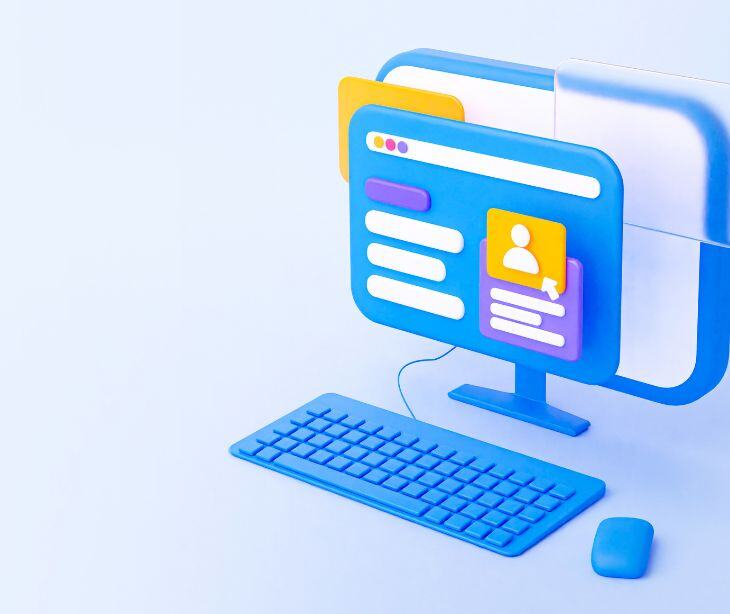
The Health Insurance Portability and Accountability Act (HIPAA) sets forth important regulations in the healthcare industry to safeguard the privacy and security of patients' sensitive health information. As healthcare providers and organizations navigate HIPAA compliance, there are often questions about specific practices, such as using email communication.
What specific HIPAA regulations govern email communications containing PHI?
HIPAA email communications are governed primarily by the HIPAA privacy rule and the HIPAA security rule. The privacy rule sets national standards for the protection of PHI, including when it can be disclosed and to whom. The security rule requires covered entities to implement specific safeguards to protect electronic protected health information (ePHI) during transmission, such as encryption, secure access controls, and audit controls.
The HIPAA privacy rule mandates that PHI be disclosed only for permitted purposes, such as treatment, payment, and healthcare operations, or with the individual's authorization. It requires covered entities to make reasonable efforts to limit the use or disclosure of PHI to the minimum necessary to accomplish the intended purpose. The HIPAA security rule specifies three types of safeguards:
- Administrative safeguards: Policies and procedures designed to manage the selection, development, implementation, and maintenance of security measures to protect ePHI and manage the conduct of the covered entity's workforce.
- Physical safeguards: Measures to protect electronic information systems and related buildings and equipment from natural and environmental hazards, and unauthorized intrusion.
- Technical safeguards: Technology and related policies and procedures that protect ePHI and control access to it. This includes encryption, access controls, and audit controls.
Read more: What are administrative, physical and technical safeguards?
What are the potential risks of using non-compliant email services for PHI and how can they be mitigated?
Using non-compliant email services for PHI can lead to unauthorized access, breaches of confidentiality, and big fines and penalties. Risks include interception, unauthorized access, and lack of audit controls.
To mitigate these risks, organizations should:
- Select HIPAA compliant providers: Use email services that explicitly offer HIPAA compliance, and ensure they sign a business associate agreement (BAA).
- Implement strong access controls: Ensure that email accounts are protected with strong, unique passwords and multi-factor authentication.
- Regular audits and monitoring: Conduct regular security audits and monitor email usage to detect and respond to suspicious activities promptly.
- Training and policies: Provide regular training to staff on HIPAA compliant email practices and implement clear policies regarding the use of email for PHI.
- Encryption: Ensure that all emails containing PHI are encrypted in transit and at rest.
What are the best practices for obtaining patient consent for email communications under HIPAA?
Obtaining patient consent involves informing patients about the risks associated with email communications, documenting their consent, and providing alternative communication methods if they decline.
Best practices include:
- Clear communication: Explain the risks of using email to transmit PHI, including potential breaches of confidentiality and security risks.
- Written consent: Obtain written consent from the patient, acknowledging they understand the risks and agree to communicate via email.
- Alternative methods: Offer secure alternative methods for communication, such as patient portals, secure messaging systems, or encrypted email services.
- Documentation: Keep detailed records of the consent provided by the patient, including the date, time, and specific consent given.
- Revocation process: Inform patients that they can revoke their consent at any time and provide a straightforward process for them to do so.
Read more: Patient consent: What you need to know
What role does a business associate agreement (BAA) play in HIPAA compliant email communications?
A BAA is a contract that outlines the responsibilities of the business associate in protecting PHI, ensuring they comply with HIPAA regulations, and specifying the permitted uses and disclosures of PHI.
The BAA is necessary because:
- Defines responsibilities: It clearly defines the roles and responsibilities of the business associate in protecting PHI.
- Compliance assurance: It ensures that the business associate complies with HIPAA regulations and implements necessary safeguards to protect PHI.
- Legal protection: It provides legal protection for both parties, specifying the actions that must be taken in the event of a breach and the liability for non-compliance.
- Audit and monitoring: It allows for auditing and monitoring of the business associate's compliance practices, ensuring ongoing adherence to HIPAA requirements.
- Data handling: It specifies how PHI should be handled, stored, and disposed of, ensuring secure management throughout its lifecycle.
How should healthcare organizations handle email breaches involving PHI?
Handling email breaches involving PHI requires prompt action to mitigate damage, comply with breach notification requirements, and implement corrective measures to prevent future breaches.
Steps to handle an email breach include:
- Immediate response: Quickly identify and contain the breach to prevent further unauthorized access to PHI.
- Investigation: Conduct a thorough investigation to determine the cause of the breach, the extent of the compromised data, and the affected individuals.
- Notification: Notify affected individuals, the Department of Health and Human Services (HHS), and potentially the media, as required by the HIPAA breach notification rule. Notifications must be provided without unreasonable delay and no later than 60 days after discovering the breach.
- Documentation: Document all aspects of the breach, including the response and corrective actions taken.
- Corrective actions: Implement measures to address the vulnerabilities that led to the breach, such as enhancing encryption, updating security protocols, and providing additional staff training.
- Monitoring: Increase monitoring and auditing of email communications to detect and prevent future breaches.
What are the features to look for in a HIPAA compliant email service provider?
A HIPAA compliant email service provider should offer encryption, secure access controls, audit capabilities, and the willingness to sign a BAA.
Key features include:
- Encryption: Ensure emails and attachments are encrypted during transmission and at rest, using standards like AES-256.
- Access controls: Implement strong access controls, including MFA, to prevent unauthorized access to email accounts.
- Audit logs: Provide audit logs and monitoring capabilities to track access and modifications to PHI.
- BAA: Offer a business associate agreement to establish the provider's commitment to HIPAA compliance.
- Secure storage: Ensure secure storage of emails containing PHI on their servers.
- User Management: Provide user management features to control who can send, receive, and access emails containing PHI.
- Incident response: Have a clear incident response plan for addressing breaches and security incidents.
- Compliance training: Offer resources or training for users on how to maintain HIPAA compliance when using the email service.
Related: Features to look for in a HIPAA compliant email service provider
How can email archiving contribute to HIPAA compliance?
Email archiving can help maintain compliance by ensuring that all emails containing PHI are securely stored, easily retrievable, and protected from unauthorized access.
Email archiving contributes to HIPAA compliance by:
- Secure storage: Ensuring that archived emails are encrypted and stored securely to protect PHI.
- Retention policies: Enabling the implementation of retention policies that comply with HIPAA requirements for retaining patient records.
- Auditability: Providing an audit trail of email communications involving PHI, which can be imperative during compliance audits and investigations.
- Accessibility: Ensuring that emails can be retrieved quickly and accurately in response to patient requests, legal inquiries, or regulatory requirements.
- Data integrity: Protecting the integrity of archived emails, preventing them from being altered or tampered with.
What is the role of data loss prevention (DLP) in HIPAA compliant emails?
Data loss prevention (DLP) technology helps prevent unauthorized sharing or accidental leakage of sensitive information, including PHI, via email.
DLP systems monitor, detect, and block the transmission of sensitive data through email. In the context of HIPAA compliant emails, DLP can:
- Identify and classify PHI: Automatically identify emails and attachments containing PHI based on predefined policies and patterns.
- Prevent unauthorized sharing: Block or quarantine emails that attempt to send PHI outside the organization or to unauthorized recipients.
- Notify and educate users: Provide real-time notifications and alerts to users attempting to send PHI improperly, educating them on compliance requirements.
- Compliance reporting: Generate detailed reports on DLP activities, helping organizations demonstrate compliance during audits.
- Policy enforcement: Enforce organizational policies regarding the handling and transmission of PHI, reducing the risk of data breaches.
Related: What is Paubox data loss prevention?
What are the responsibilities of a HIPAA compliance officer in relation to email security?
The HIPAA compliance officer is responsible for developing, implementing, and monitoring email security policies and procedures to ensure compliance with HIPAA.
Responsibilities include:
- Policy development: Develop and update policies and procedures related to the secure use of email for transmitting PHI.
- Training and education: Provide regular training and education to staff on HIPAA compliant email practices.
- Monitoring and auditing: Monitor email systems for compliance, conduct regular audits, and review audit logs to detect any violations or suspicious activities.
- Incident response: Oversee the incident response process for email breaches, ensuring timely notification and corrective actions.
- Risk assessment: Conduct risk assessments to identify vulnerabilities in email systems and implement measures to mitigate these risks.
- Vendor management: Ensure that all email service providers and other relevant vendors sign BAAs and comply with HIPAA requirements.
How should organizations handle email retention and disposal to comply with HIPAA?
Organizations must implement policies for the secure retention and disposal of emails containing PHI, ensuring compliance with HIPAA regulations.
Email retention and disposal should include:
- Retention policies: Establish and enforce policies specifying how long emails containing PHI must be retained, based on legal and regulatory requirements.
- Secure storage: Ensure that retained emails are stored securely, with encryption and access controls to protect PHI.
- Disposal procedures: Implement procedures for the secure disposal of emails and attachments containing PHI, such as using data destruction methods that prevent recovery.
- Audit trails: Maintain audit logs of email retention and disposal activities to demonstrate compliance during audits.
- Regular review: Regularly review and update retention and disposal policies to reflect changes in regulations and organizational practices.
How can organizations balance HIPAA compliance with user convenience in email communications?
Balancing compliance with convenience involves implementing user-friendly security measures, training, and providing secure alternatives for communicating PHI.
Strategies for balancing compliance and convenience include:
- User-friendly encryption: Use email services that offer seamless encryption without requiring complex processes for users.
- Integrated solutions: Implement integrated email solutions with built-in HIPAA compliance features, reducing the need for additional tools or steps.
- Training and support: Provide regular training and support to help users understand and follow secure email practices without hindering their workflow.
- Secure alternatives: Offer secure alternatives, such as encrypted messaging platforms that are easy to use and meet HIPAA requirements.
- Automated policies: Use automated DLP and security policies to reduce the burden on users while ensuring compliance.
- Feedback mechanisms: Collect feedback from users to identify pain points and improve the balance between security and convenience.
How can Paubox assist in providing HIPAA compliant email?
Paubox ensures HIPAA compliant email by providing seamless encryption for all outgoing emails, requiring no extra steps from users or recipients. With Paubox Email Suite, every email is automatically encrypted, integrating smoothly with existing platforms like G Suite and Office 365. This eliminates the risk of human error in selecting encryption options. Advanced security measures, including two-factor authentication and inbound threat protection, safeguard against scams, viruses, and phishing attacks. Paubox also offers business associate agreements (BAAs) with all paid plans, guaranteeing compliance with HIPAA regulations. By making secure email communication straightforward and hassle-free, Paubox effectively protects sensitive healthcare information while maintaining ease of use.
Learn more: HIPAA Compliant Email: The Definitive Guide
In the news
Email is a common communication tool in healthcare, as evidenced by the 361.6 billion emails sent daily. According to Paubox’s January 2024 breach report, email breaches affected 137,008 people, marking it as the third most common type of breach. These breaches occurred through unauthorized access to or disclosure of protected health information (PHI) via email.
Subscribe to Paubox Weekly
Every Friday we'll bring you the most important news from Paubox. Our aim is to make you smarter, faster.




